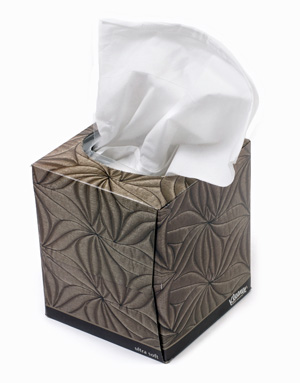Facial Tissue: Category Versatility and Opportunities in Developing Markets
![]() Print this Article | Send to Colleague
Print this Article | Send to Colleague
 Value sales growth for facial tissues in mature markets throughout Western Europe and North America has hit a ceiling, according to a report now available through Euromonitor International, London, U.K. Manufacturers of facial tissue are now looking to the fast-moving Asia Pacific, Middle East, and Africa, and Latin American regions to drive sales growth. This new analysis, titled Facial Tissue: Category Versatility and Opportunities in the Developing Markets, looks at growth strategies through the adoption of innovative product positioning, branding, and packaging that help manufacturers of facial tissues gain additional traction in these markets.
Value sales growth for facial tissues in mature markets throughout Western Europe and North America has hit a ceiling, according to a report now available through Euromonitor International, London, U.K. Manufacturers of facial tissue are now looking to the fast-moving Asia Pacific, Middle East, and Africa, and Latin American regions to drive sales growth. This new analysis, titled Facial Tissue: Category Versatility and Opportunities in the Developing Markets, looks at growth strategies through the adoption of innovative product positioning, branding, and packaging that help manufacturers of facial tissues gain additional traction in these markets.As the report notes, manufacturers of facial tissues turn to developing regions for growth, as increasing disposable incomes coupled with increased living standards provide the opportunity for additional value and volume sales. However, developing markets are not homogeneous, as they often differ in per capita consumption and product uses. Thus, strategies for growth in terms of product development and marketing can and should differ as well to drive market penetration and revenues.
With the increased expansion of facial tissues into developing markets, manufacturers have an opportunity to shape their image with the consumer. The inherent hygienic uses of facial tissues should be highlighted to correlate increasing cleanliness and healthy hygiene habits with facial tissues. However, while consumers with higher incomes are becoming more receptive to the idea of paying for such products to incorporate the products in daily hygiene practices, manufacturers must balance this demand with acceptable price points to ensure wider category penetration.
Manufacturers of facial tissues can position their products within the context of prevailing environmental dynamics and concerns in the developing countries. This means marketing their products as a tool to help manage the effects of industrial and urban development, including germs, pollution and even air quality.
As explained in the report, understanding the cultural and religious norms of developing markets can also provide the opportunity for manufacturers of facial tissues to target specific consumers. This understanding can manifest itself in many forms, including participation in traditional or religious events to let consumers know that manufacturers understand the importance of these traditions to the consumer. However, manufacturers must take a soft marketing approach to this targeting, as commercialization of these events can lead to consumer backlash.
Packaging of facial tissues provides ample opportunities to draw consumer attention through unique aesthetics and formats. Character licensing is one way that the leading brands have been utilizing to differentiate themselves from competition. This includes not only more established characters, such as Disney characters, but also popular locally created characters that allow for added consumer appeal.
More information about this report is available online.


